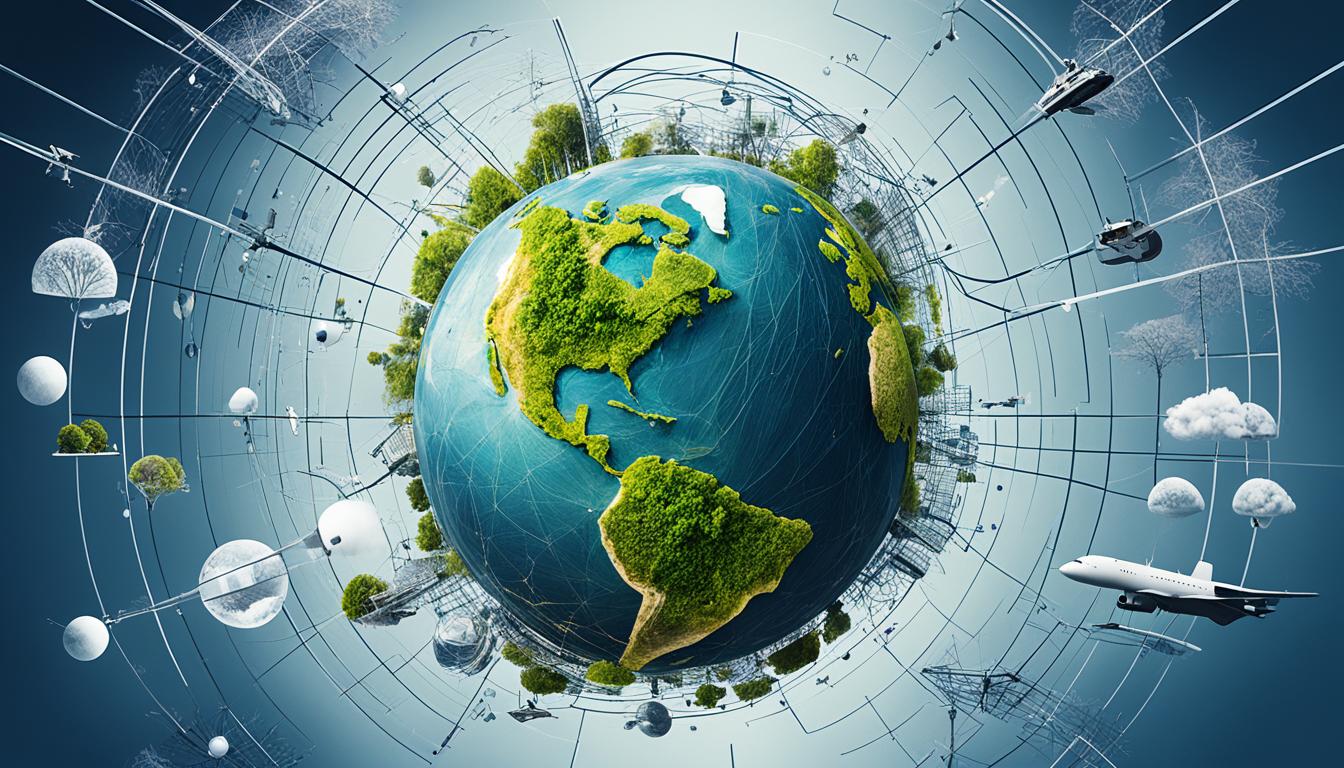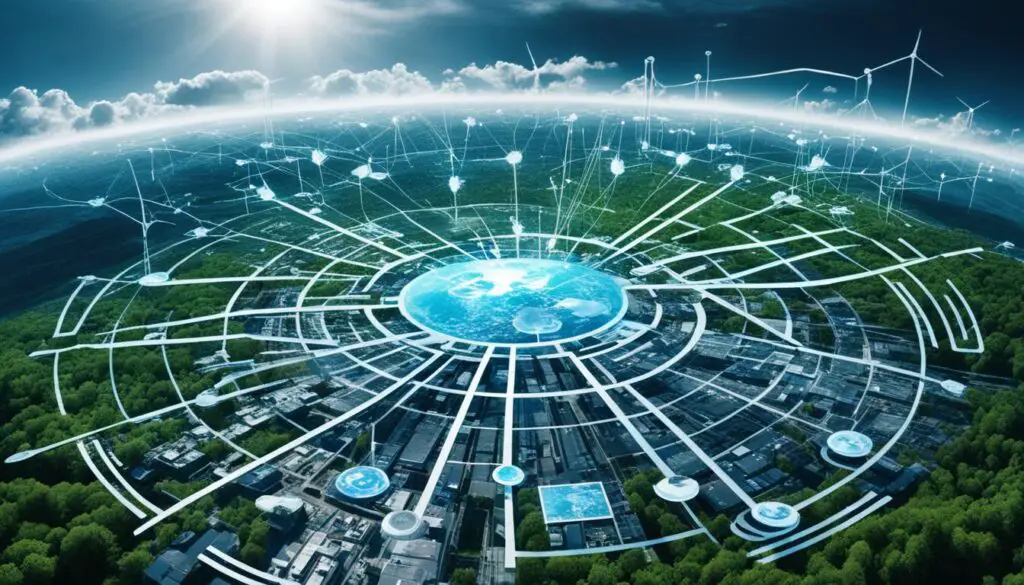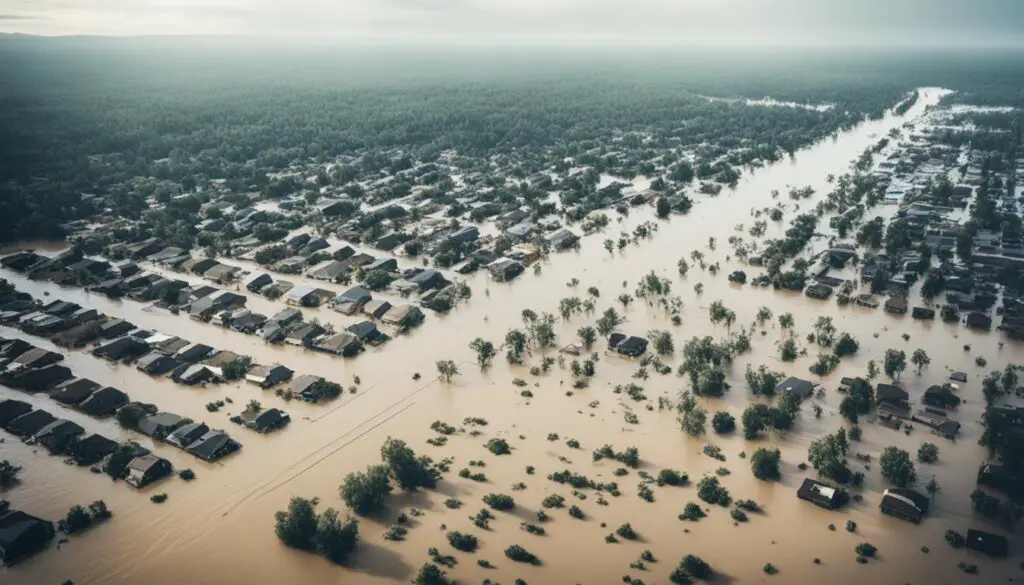
Understanding and predicting our environment has always been crucial. Now, advancements in artificial intelligence (AI) are changing how we forecast weather. One key player is Google DeepMind. They’ve created a machine learning model named GraphCast.
GraphCast uses past weather data and AI’s power to predict weather accurately. It’s faster and more precise than 90% of the best weather prediction systems. What previously needed hours and supercomputers now takes less than a minute on a standard desktop.
GraphCast is incredibly accurate at forecasting a variety of weather metrics. It can predict severe weather events like high temperatures and tropical cyclones. This AI model finds complex patterns in historical data which are hard to see with traditional methods.
GraphCast isn’t just precise; it’s also energy-efficient. It uses about 1,000 times less energy than old weather forecasting methods. This makes it a sustainable, cost-effective way to predict the weather.
Key Takeaways:
- AI climate modeling, powered by Google DeepMind’s GraphCast, revolutionizes weather forecasting.
- GraphCast uses historical weather data and AI to accurately predict weather patterns in seconds.
- GraphCast outperforms 90% of the targets used by the best weather prediction systems.
- GraphCast’s accuracy extends to severe weather events, such as extreme temperatures and tropical cyclones.
- GraphCast is about 1,000 times more energy efficient than conventional weather forecasting methods.
The Power of AI in Weather Forecasting
Artificial intelligence (AI) is changing weather forecasting. Traditional methods use complex equations and observations, but they take time. AI uses deep learning models trained on past weather patterns. This approach is faster and more accurate.
Google DeepMind’s GraphCast is an example of these AI emulators. It doesn’t use physics equations but relies on historical data. Because of this, it predicted Hurricane Lee’s arrival in Nova Scotia nine days early.
AI makes weather forecasting accessible to more people. This means quicker discoveries. Yet, AI sometimes misses extreme events. Also, adding climate change effects to models is hard.

AI emulators bring many benefits to forecasting. They’re more accurate than old methods. Also, they work by looking at past weather, avoiding complex equations.
GraphCast proved AI’s value by forecasting Hurricane Lee’s Nova Scotia hit. This shows AI can predict severe weather accurately.
AI in forecasting means easier access and new opportunities. It lets more people understand weather better. This helps everyone make smarter choices.
“The accuracy of AI emulators in weather forecasting presents a significant advancement in the field. By leveraging historical weather patterns, we can generate accurate predictions and provide valuable insights into weather-related phenomena.”
Still, AI in forecasting faces hurdles. AI often overlooks extreme events. Plus, adding climate change into models is tricky.
Despite these issues, AI’s impact on weather forecasting is clear. It offers a better approach. This is changing the field and setting up future improvements.
The Multimodal Potential of AI Foundation Models in Weather and Climate
Foundation models are key in pushing forward our weather and climate forecasts. They can process different kinds of raw data. This allows them to give a wide view of data. It helps in changing their use for various tasks and situations. In the ever-changing world of weather and climate, these models are very useful because of their flexibility.
Foundation models are great because they can make weather and climate forecasts better. They understand data well so their predictions are more accurate than old ways. Plus, they’re good at getting detailed info from less detailed data. This lets us look closer at weather patterns.
When it comes to hard-to-predict events like wildfires and hurricanes, foundation models can really help. They can spot the conditions that lead to these events. They use lots of data types over different times and places. This includes data from weather stations, satellite images, and sensors. All this data gives us a full picture of what’s going on in the atmosphere and on the earth.
The integration of foundation models in weather and climate prediction holds immense potential in understanding and forecasting extreme events that can have a substantial impact on our environment and society.
But, foundation models have challenges too. They sometimes miss predicting extreme events. We need to make them better at catching and predicting these events to get ready and respond well. Also, as our climate changes fast, these models must adjust. They need to keep up with new trends and patterns.
To show how important foundation models are for weather and climate forecasts, look at this table:
| Data Processing | Multimodal Model | Varying Time and Spatial Scales | High-resolution Information | Extreme Events |
|---|---|---|---|---|
| Enhances accuracy and efficiency of forecasting | Handles diverse types of data | Adapts to changing conditions | Infers detailed insights from limited data | Identifies conditions conducive to extreme events |
This table highlights the many benefits of foundation models in weather and climate prediction. They not only improve forecast accuracy but also help us understand and detect extreme events. Such models are key to protecting our environment and society.

Conclusion
The use of AI in predicting weather and climate change brings many good things. With AI, we can get quicker and more precise forecasts. This helps us prepare better for weather changes.
AI models, especially foundation models, can look at lots of different data. This helps improve how we predict the weather and climate. By looking at past weather and using new ways to process data, these models make better predictions. They help us understand and get ready for weather changes.
Still, using AI to predict weather has its difficulties. It’s hard for AI to predict very severe weather events. Also, adding climate change effects to these models is complex. But the future looks bright for AI in weather and climate forecasting. With more research, we can make forecasts even better. This will help us protect our planet and keep our communities safe.
FAQ
How is AI used in weather forecasting?
What is Google DeepMind’s GraphCast?
How does GraphCast improve weather forecasting?
What are the benefits of AI foundation models in weather and climate prediction?
What are the challenges in AI weather and climate prediction?
Source Links
- https://sitn.hms.harvard.edu/flash/2024/ai_weather_forecasting/
- https://research.ibm.com/blog/weather-climate-foundation-model
- https://www.weforum.org/agenda/2023/12/ai-weather-forecasting-climate-crisis/






